
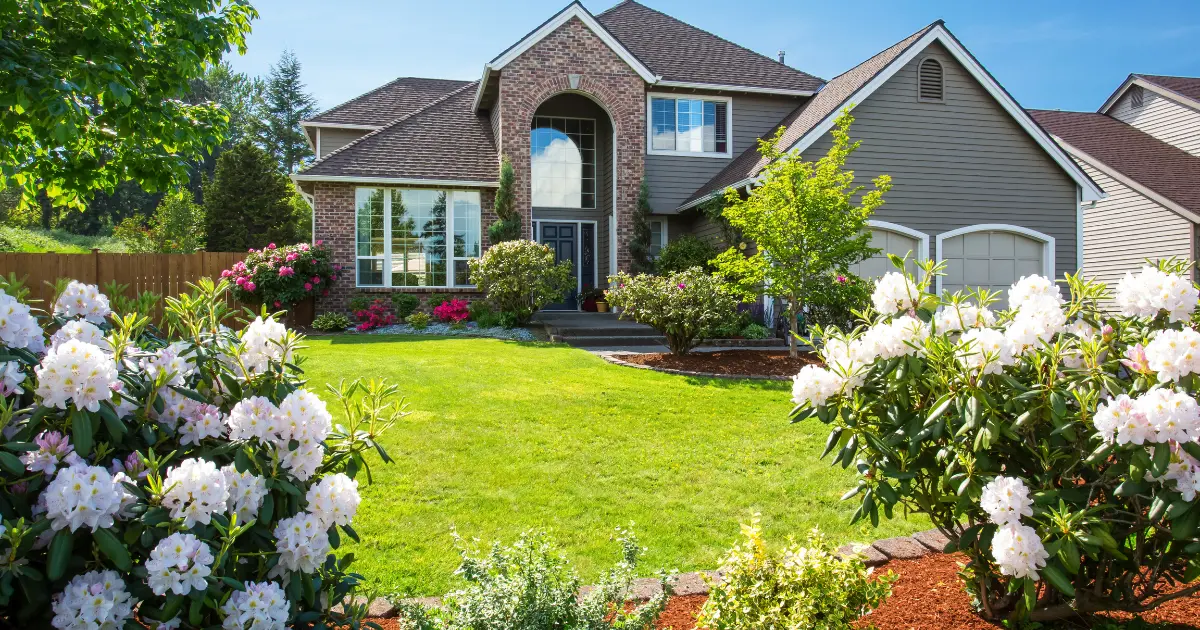
Your front yard is the first thing visitors see when they approach your home, making it the perfect canvas to showcase your style and create a welcoming atmosphere. With the right landscaping ideas, you can transform your front yard into a stunning outdoor space Here are some ideas to consider to add curb appeal to your home.:
Create a Welcoming Entryway
Design a pathway leading to your front door using materials like stone, bricks, or pavers. This pathway can be bordered with plants or flowers to add color and interest.
Focus on Symmetry
Symmetrical landscaping often creates a balanced and pleasing appearance. Flank your entryway with matching planters, shrubs, or trees.
Add Colorful Plants
Choose a variety of plants, shrubs, and flowers that bloom at different times of the year to ensure year-round color. Consider incorporating perennials for low-maintenance beauty.
Create Visual Interest with Layers
Incorporate layers of plants, varying in height and texture, to add depth and visual interest to your front yard. Use taller plants or trees in the back, medium-sized plants in the middle, and low-growing plants or groundcovers in the front.
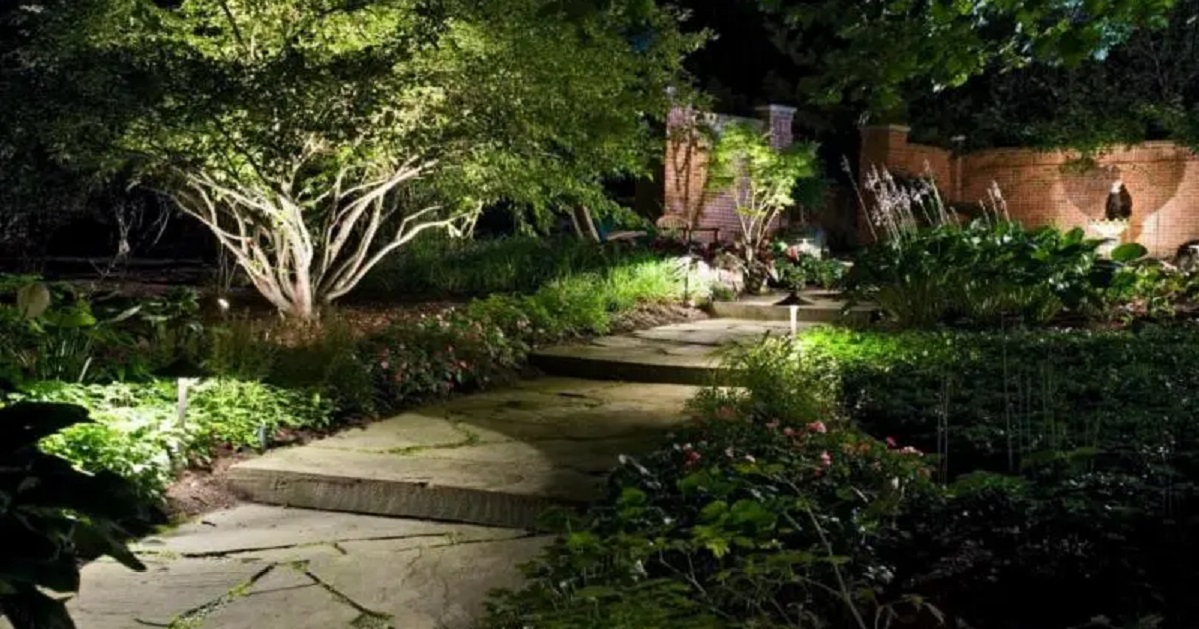
Install Outdoor Lighting
Lighting can highlight key features of your front yard and improve safety and security. Consider adding path lights, spotlights, or lanterns to illuminate walkways, trees, and architectural elements.
Include Hardscape Elements
Integrate hardscape features like a small patio, seating area, or decorative wall to add structure and functionality to your front yard. These elements can also serve as focal points.
Choose Appropriate Scale
Consider the size of your home and yard when selecting plants and landscaping elements. Larger homes may require larger plants and features, while smaller homes may benefit from smaller-scale landscaping.
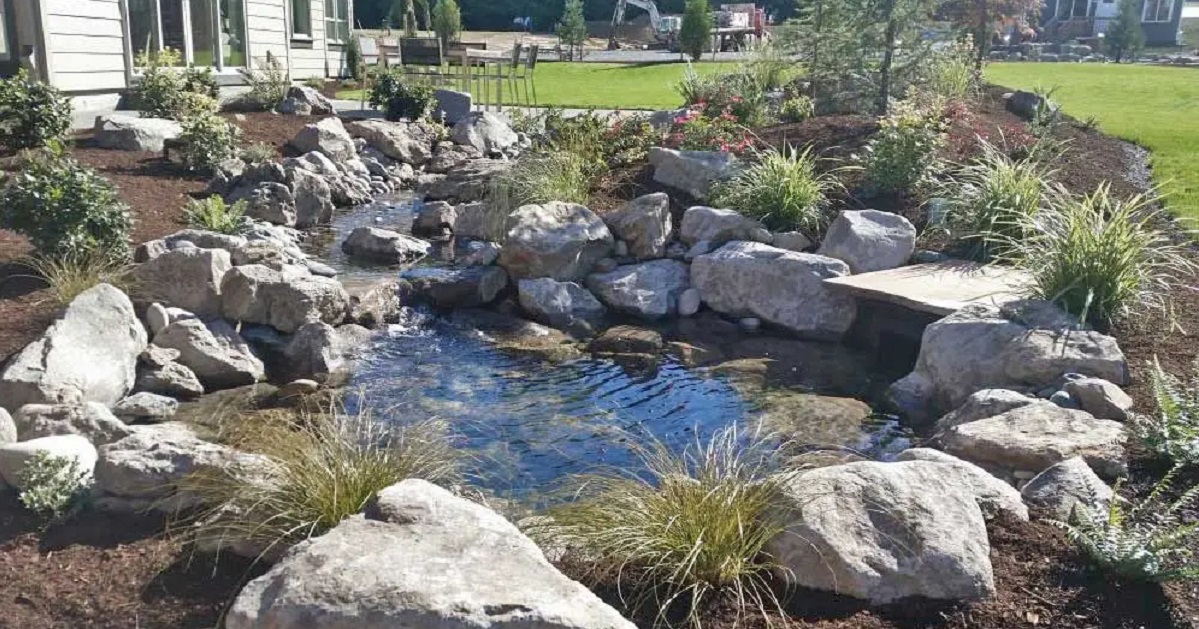
Water Features
A fountain, pond, or birdbath can add a sense of tranquility to your front yard. Water features also attract birds and other wildlife.
Incorporate Edging and Mulch
Define garden beds and pathways with decorative edging materials such as bricks or stones. Mulch can help retain moisture, suppress weeds, and give your landscaping a polished look.
Beautify Your Hillside
Hillside landscaping techniques allow you to use every part of your yard, even if you think no foliage can thrive on sloped terrain. There are many plants that not only thrive on hillsides but control erosion, too.
When planning your front yard landscaping, it’s also a good idea to consult with landscaping professionals for advice and assistance in creating a design. Frontier Landscaping has experience designing and installing beautiful patios, paths, retaining walls, water features, and more! Contact us today for a free estimate!

Water conservation is an increasingly critical topic in today’s world, where freshwater resources are becoming scarcer due to factors like climate change and population growth. Saving money is an essential benefit of water conservation too. Fortunately, there are numerous ways individuals can contribute to water conservation efforts right in their own homes and yards. Here are some tips to conserve water and reduce your environmental footprint:
Fix Leaks Promptly: Leaky faucets, toilets, and pipes can waste significant water over time. Check for leaks often and repair them promptly to prevent water waste.Monitor your monthly water bill so you notice any spikes in water use when there shouldn’t be any.
Install Water-Efficient Fixtures: Replace old, inefficient toilets, showerheads, and faucets with water-efficient models. Look for products with the WaterSense label, which indicates they meet high-efficiency standards set by the Environmental Protection Agency (EPA).
Take Shorter Showers: Cutting down on shower time can save gallons of water each day. Consider installing a low-flow showerhead to reduce water usage without sacrificing water pressure.
Conserving water in your landscape is essential for both environmental sustainability and cost-effectiveness. Here are some practical tips to help you conserve water in your yard:
Harvest Rainwater: You may think we already have enough rain here so why harvest rainwater? Our summers are dry and hot, making a supplemental water supply helpful. Rainwater harvesting systems, including rain barrels and cisterns, offer an eco-friendly solution.
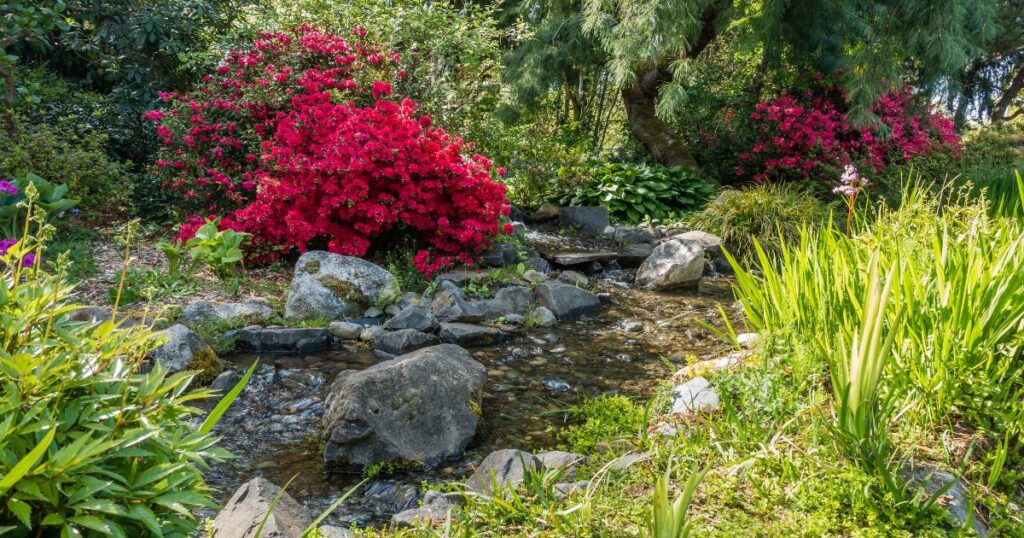
Choose Drought-Resistant Plants: Opt for native or drought-resistant plants adapted to your local climate. These plants require less water to thrive and can withstand dry conditions better than non-native species.
Group Plants with Similar Water Needs: Arrange your plants based on their water requirements. Grouping plants with similar watering needs together allows you to water more efficiently and avoid overwatering or underwatering specific areas.
Mulch Garden Beds: Apply a layer of organic mulch, such as wood chips or shredded bark, around plants and garden beds. Mulch helps retain soil moisture, suppress weed growth, and insulate plant roots from temperature fluctuations.
Water Wisely: Water your landscape during the early morning or late evening to minimize evaporation and reduce water loss due to wind. Use automatic drip irrigation systems or soaker hoses to deliver water directly to the root zone of plants, minimizing runoff and waste.

Adjust Sprinklers Properly: Ensure your sprinkler system is efficiently adjusted to water plants and lawn areas. Avoid watering sidewalks, driveways, and other non-vegetated areas, and adjust sprinkler heads to prevent overspray and runoff.
Sweep, Don’t Hose: Instead of using a hose to clean driveways, patios, and sidewalks, use a broom or rake to sweep away debris instead of turning on your hose. This simple switch can save gallons of water per minute.
Need help with water conservation in your landscape? Give us a call for a free estimate, and we can see where you could make changes to conserve water.
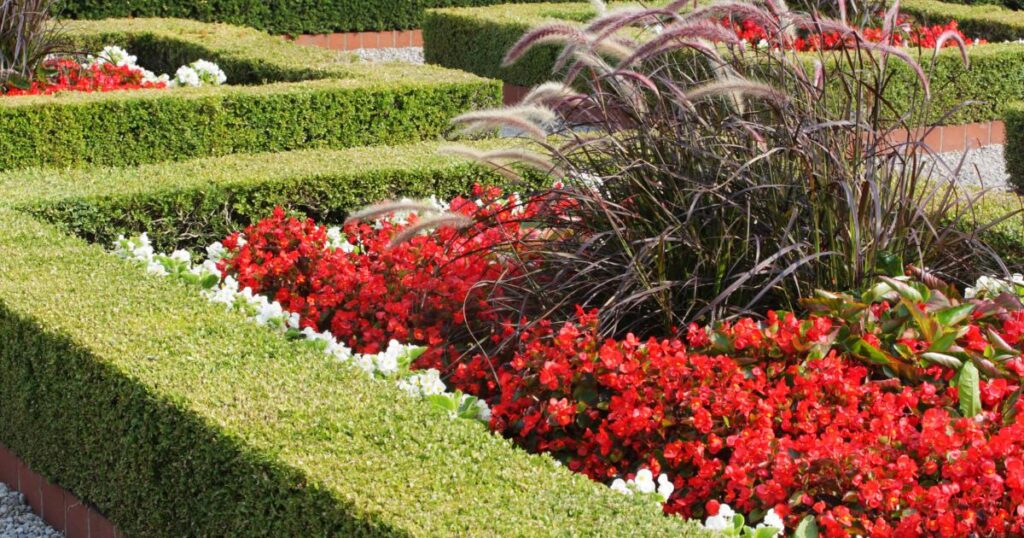
The allure of lush greenery and meticulously shaped topiary foliage is unique and attention-grabbing. These living sculptures bring an artistic touch to your landscape, adding a sense of refinement and order. Enhance your outdoor space by incorporating topiaries.
Incorporating Topiaries into Landscape Design:
Topiaries can serve various roles in your landscape design, from creating focal points to defining borders and pathways. Placing strategically trimmed boxwood spheres along a garden path or flanking an entrance provides a sense of symmetry and order.
Consider incorporating animal-shaped topiaries, such as rabbits or peacocks, into your garden for a whimsical touch. These charming additions add a playful element while maintaining the elegance associated with topiaries.
Popular Plants for Topiaries:

Boxwood: Known for their versatility and resilience, boxwood topiaries are popular. They can be shaped into various geometric forms, including cones, spheres, and spirals, providing a structured and formal appearance.
Rosemary: These fragrant and hardy topiaries are beautiful and serve a bonus purpose in the kitchen. Their aromatic leaves make them excellent choices for both ornamental and culinary gardens.
Arborvitae, with its vibrant green foliage and conical shape, is an excellent choice for those seeking a touch of evergreen elegance in their landscape. Known for its hardiness and adaptability, arborvitae topiaries can withstand various climates. These popular shrubs can be pruned into columns or pyramids, providing a year-round focal point in your garden. As a bonus, they can also serve as a natural privacy screen.
Bay laurel topiaries add a Mediterranean flair to your landscape with their glossy and aromatic leaves. These topiaries not only contribute to the visual appeal of your garden but also offer culinary benefits. Prune them into graceful, compact shapes such as spirals or standards, and you’ll have a fragrant and practical addition to your outdoor space.
Privet topiaries can add classic beauty to formal garden designs. With their small, dark green leaves, privet lends itself well to shaping into neat geometric forms, such as cubes or cylinders. They can be used to define garden borders, create pathways, or create entrances.
Holly topiaries can be sculpted into various shapes, including pyramids and globes. Consider placing them near entrances or as focal points in winter gardens.
Pruning Requirements for Topiaries:
Regular pruning is the key to maintaining the sculpted perfection of topiaries. Topiaries must be trimmed during the growing season, typically spring and early summer, to encourage healthy growth.
Start by removing dead or diseased foliage, then carefully shape the topiary according to your desired design. Consider using a wireframe as a guide for intricate shapes. Remember to prune regularly to prevent overgrowth and maintain the crisp lines that make topiaries appealing.
Explore the world of topiaries for fun and function. Frontier Landscaping has expert landscape pruning, design, and installation services. Contact us today for a free estimate!
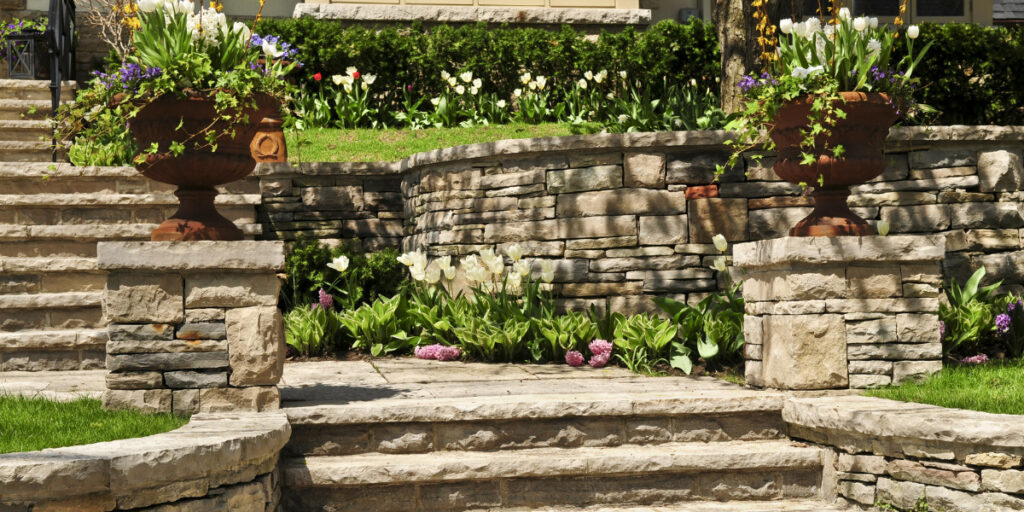
Hillside landscaping techniques allow you to use every part of your yard, even if you think no foliage can thrive on a sloped terrain. A hillside nursery can turn an unused section of your property into a thriving garden space. Frontier Landscaping in Vancouver, WA, knows exactly how to landscape a hill to prevent erosion and to provide a viable space for plants to thrive.
Soil Stabilization

Soil on a hillside garden can erode over time due to normal weather patterns like heavy rains and high winds. There are some soil stabilization methods to prevent excess erosion from destroying your landscaping and killing nearby plants.
Erosion control blankets can cover the whole area, providing a finished look and keeping plants in place. The blankets are made from biodegradable material that won’t harm surrounding plants.
Certain plants can also stabilize the soil including:
- Vinca
- Creeping Rosemary
- Creeping Thyme
- Viburnum
- Ferns
- Fountain Grass
Terracing

Terracing involves creating level platforms or steps on the hillside, which can be used for gardening, seating, or pathways. These terraces help reduce erosion and make it easier to maintain the landscape. Terracing is a great way to set up extra gardening beds to grow your favorite vegetables. The flat surface can also accommodate water features or other decorative elements to create the perfect outdoor oasis.
Proper Drainage
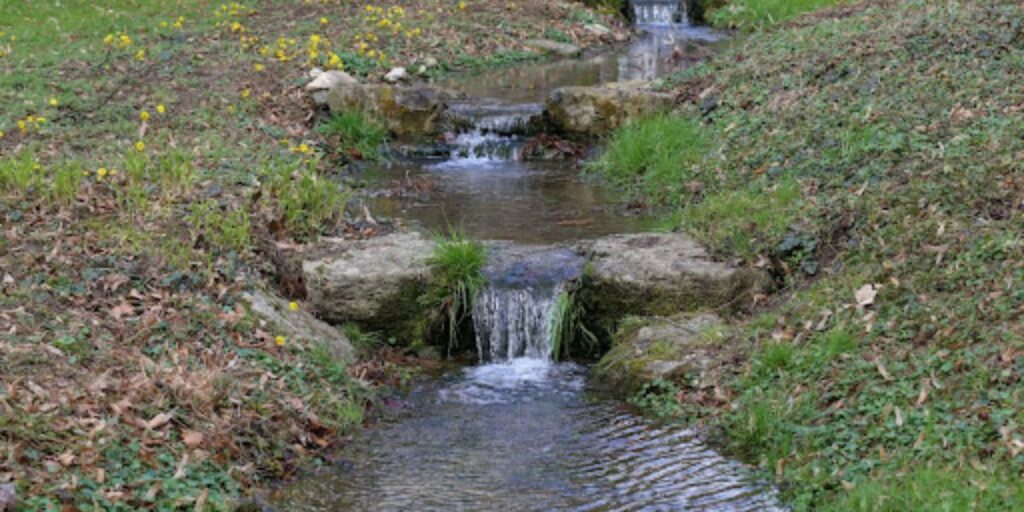
Prevent erosion and water runoff by installing adequate drainage systems like French drains, yard drains, dry creek beds or swales. Ensure that the water flows away from the hillside to prevent soil erosion. Proper drainage is also essential in protecting your landscaping investment by helping divert surface water away from valuable trees and other plants and preventing standing water on lawns and landscapes.
Mulching
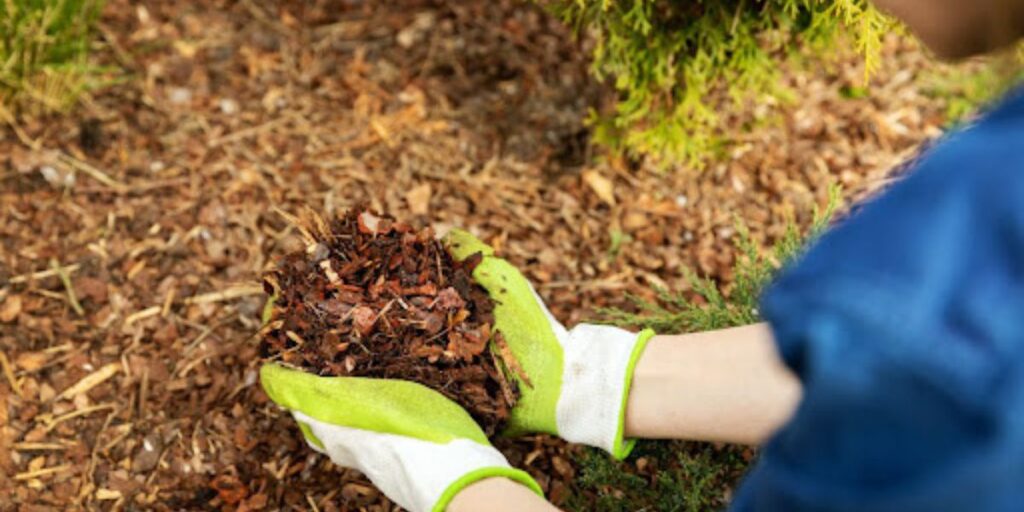
Applying mulch helps retain moisture, suppress weeds, and improve soil quality. Organic mulch, like wood chips or straw, is excellent for hillside landscapes. Mulch can help hold in rainwater and keep it from flowing downhill. Over time you will improve the soil structure and make it healthier and more able to handle rainy weather while nurturing your plants.
Add Hardscaping
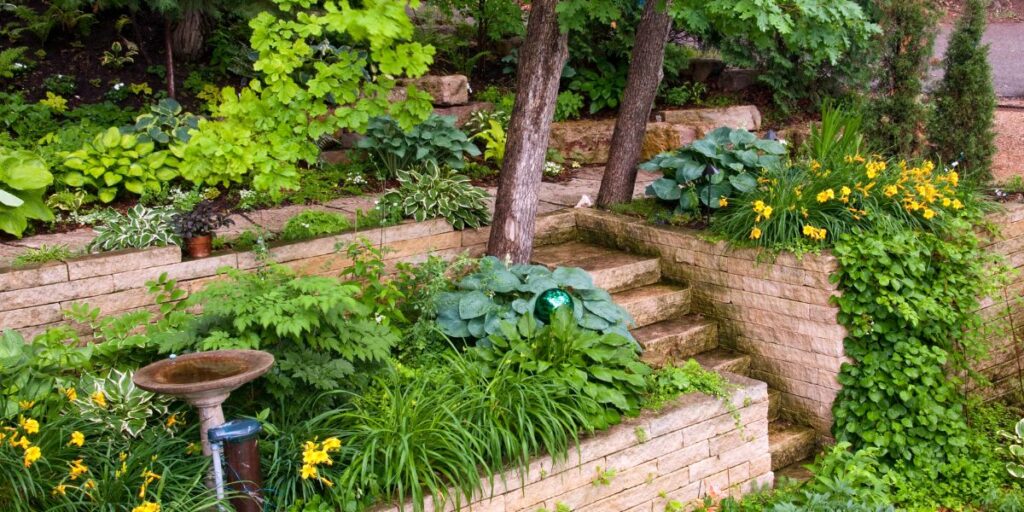
Consider incorporating hardscape elements like retaining walls and stairs into the landscape design. These not only add visual interest but also provide functional solutions for navigating the slope of your yard.
Retaining walls help control erosion, manage water drainage, create usable terraces, provide stability, enhance safety, improve aesthetics, and increase property value. When designed and installed correctly, retaining walls can transform a challenging hillside into a beautiful, functional, and safe outdoor space. It’s essential to work with a professional or seek expert guidance when planning and constructing retaining walls on a hillside to ensure they are structurally sound and meet your specific needs.
Additional Safety Measures
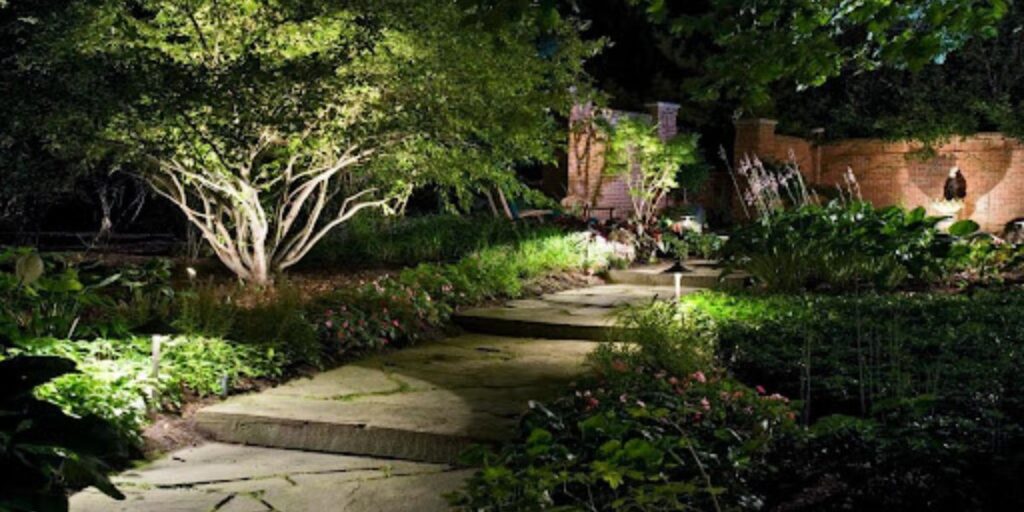
Safety should be a priority, especially if your hillside is steep. Install handrails on steps where needed. To prevent accidents, install proper outdoor lighting on staircases.
Including safety measures along with taking the proper steps to reduce erosion will create a space that is both beautiful and safe to use.
Reliable Hillside Landscaping in Washington
Landscaping services aren’t just for properties with flat spaces. Hillside landscaping can provide a beautiful area to grow vegetables or cultivate native plants. Adding elements like mulch, terracing, or even hardscaping elements creates a space that you will never want to leave.
Frontier Landscaping provides a quote for their landscaping services in Vancouver and the surrounding areas. Fill out the online contact form or speak to our team directly by calling 360-574-8979.

When you are trying to unwind and enjoy your outdoor space, the last thing you want to worry about is privacy. A privacy landscape design can give you back your space.
Frontier Landscaping provides custom privacy landscaping for homeowners in Vancouver and the surrounding areas.
Whether you want to install a water feature or add greenery with a hedge fence, there are privacy landscaping options to suit any style.
Layer Your Planting
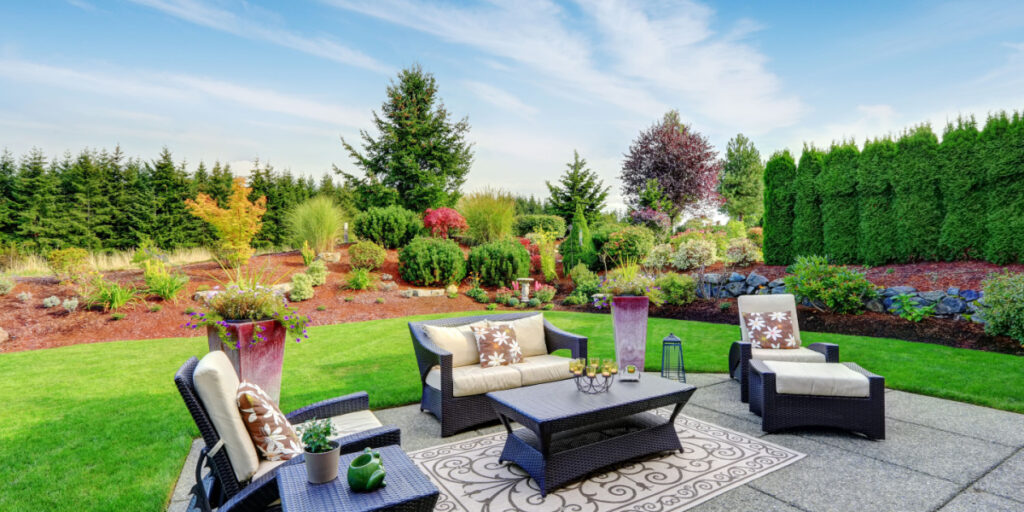
Place the tallest plants and trees in the areas you want to block from view. Start with taller trees or shrubs along the perimeter, and then work your way down with shorter plants, ornamental grasses, and flowers. This multi-level approach not only offers privacy but also adds depth and texture to your landscape.
Plant Shrubs Near Your Fence

If the fence around your property doesn’t provide enough privacy, you can plant shrubs or hedges near the fence line. The layer of greenery adds an extra layer between you and your neighbor while making your property feel more secluded.
Some shrubs and hedges lose their leaves as seasons change, so consider how much privacy you need year-round when choosing your plants. Evergreen plants provide year-round coverage and look beautiful through every season.
Your landscaping team has the training to plant the shrubs and hedges in the perfect place so they have room to grow without the root systems combining and causing serious problems.
Water Features
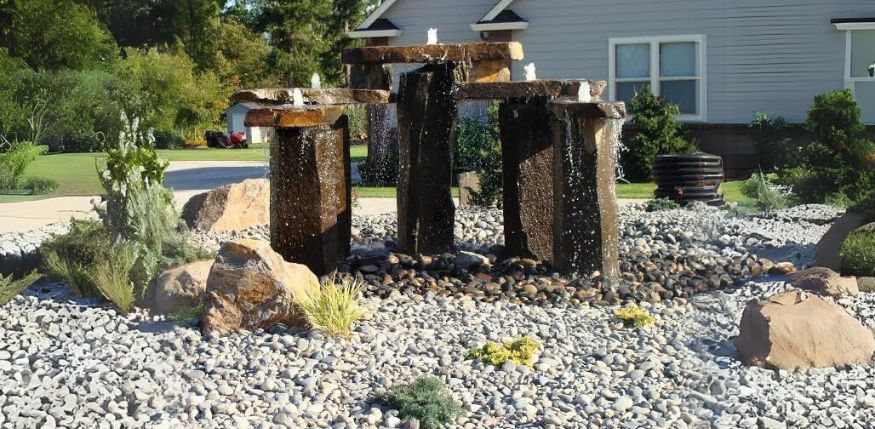
Privacy isn’t just about keeping others from seeing you, it’s also about keeping them from hearing you. A water feature adds relaxing background noise while you enjoy your outdoor space while preventing neighbors from overhearing your private conversations.
A custom water feature can also help dampen sounds of nearby traffic and noise your neighbors make as they spend time outside. Whether it’s a small pond surrounded by lush vegetation or a cascading waterfall wall, water features add calm while helping you enjoy your private yard.
Add a Retaining Wall
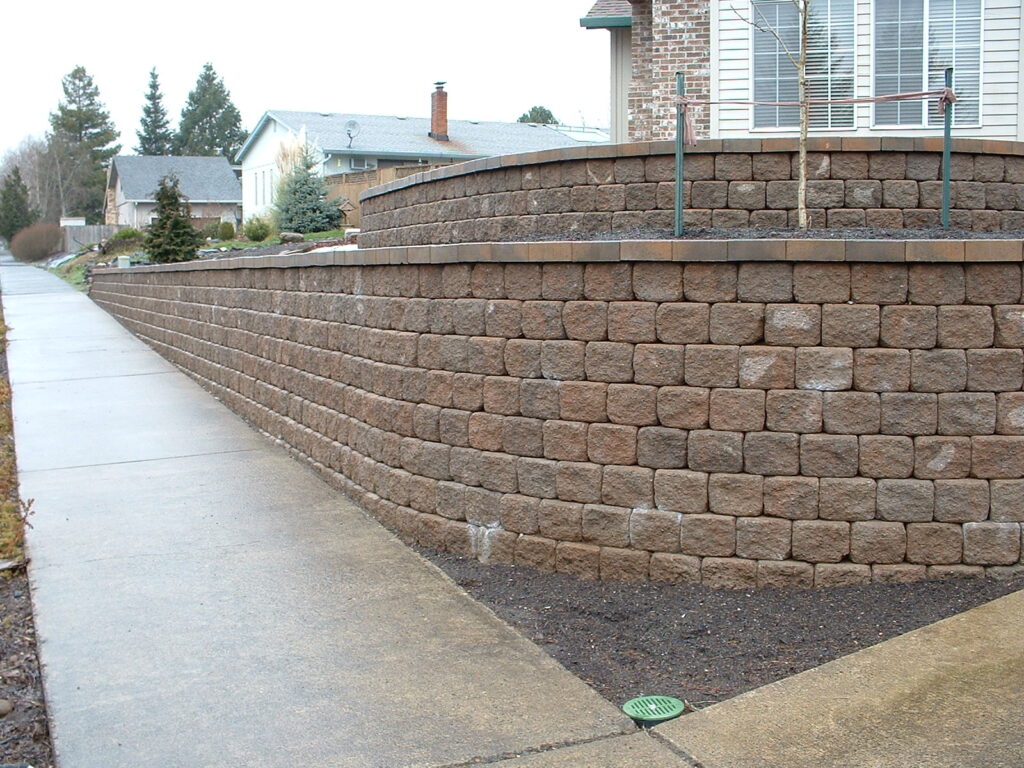
Retaining walls have a dual purpose. They boost privacy and add stability to your landscape. A stone retaining wall gives you extra space to plant flowers while preventing erosion and other property damage.
You can choose from a number of materials for your retaining wall, including brick, stacked stone, or concrete. A retaining wall is a great way to add visual interest to your property while maintaining your privacy. When combined with native plants, you get a unique yard structure that is durable enough to last for many years with minimal maintenance.
Increase Your Privacy Through Custom Landscaping
You deserve to enjoy your backyard without worrying about curious neighbors watching your every move. Privacy landscaping gives you the option of installing a water feature, living fence, or a soil berm to create a private space that adds to your home’s value.
It’s always a good time to invest in your property and your privacy. For a free quote from Frontier Landscaping in Vancouver, Washington, fill out the online contact form or call: 360-574-8979.
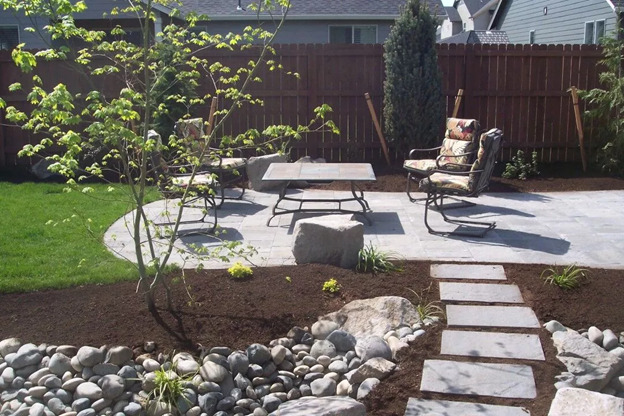
We have some tips if you’re more interested in enjoying the summer months instead of spending your free time maintaining your landscape! With the right approach, you can enjoy a beautiful yard without spending hours on maintenance.
Use perennials and ground covers.
Perennials and ground covers are some of the best ways to reduce landscape maintenance without sacrificing aesthetic appeal. Perennials come back every year, so you don’t have to replant them each spring. Plus, some perennials are drought-tolerant and can survive in various conditions. Ground covers are also great for reducing maintenance because they spread rapidly, eliminating the need to replace lost or damaged plants. Both perennials and ground covers require minimal watering and fertilizer, making them excellent low-maintenance landscaping choices. These plants can also replace a lawn, so less mowing!
Use native plants
Using native plants in your landscape can be a great way to reduce maintenance while still having an attractive garden. Native plants are adapted to the local climate, soil, and moisture levels, making them much easier to care for than other plants that might require more attention.
Create raised garden beds.
Raised garden beds are a great way to make the most of your landscape without spending hours maintaining it. Raised garden beds can be easily installed and provide an easy way to grow vegetables, herbs, and flowers without having to till the soil or pull weeds.
Raised garden beds can be made from various materials, including wood, stone, or concrete blocks. To ensure that the soil in the bed remains loose and well-drained, use a combination of compost and soil to fill the bed.
It is essential to remember that raised garden beds require more watering than traditional gardens, as they tend to dry out quickly. If you install an irrigation system, ensure it can reach the raised beds so the plants are watered.
Use mulch
Mulch is an essential element in any landscape as it helps retain moisture, prevents weeds from sprouting, and adds a decorative touch. Mulch comes in various colors, textures, and materials and can create a uniform look throughout your garden.
When adding mulch to your landscape, remember that too much mulch can harm your plants. Use about two to four inches of mulch, which will reduce weeds and help to retain moisture. Additionally, organic mulches such as shredded bark, pine needles, and cocoa shells are preferable since they provide additional nutrients to the soil.
Using mulch in your landscape is a great way to conserve water, improve soil quality and reduce weeds without extensive maintenance.
Install an automatic irrigation system
Installing an automatic irrigation system is one of the best ways to keep your landscape looking fresh and healthy without spending hours maintaining it. With a properly installed irrigation system, you can save time, money, and water while ensuring that your plants and lawn get the right amount of water.
Plant evergreens
If you want to have a beautiful landscape year-round, evergreen trees are the way to go. Evergreen trees stay green all year and don’t lose their leaves, which means less time spent raking and less mess around your yard. They also provide a gorgeous backdrop for seasonal plants and flowers. Some popular evergreen trees include pine, spruce, cedar, and fir.
As a full-service landscaping company, we can help handle your maintenance needs, address landscaping issues, and complete projects. Call us today at (360) 574-8979.























